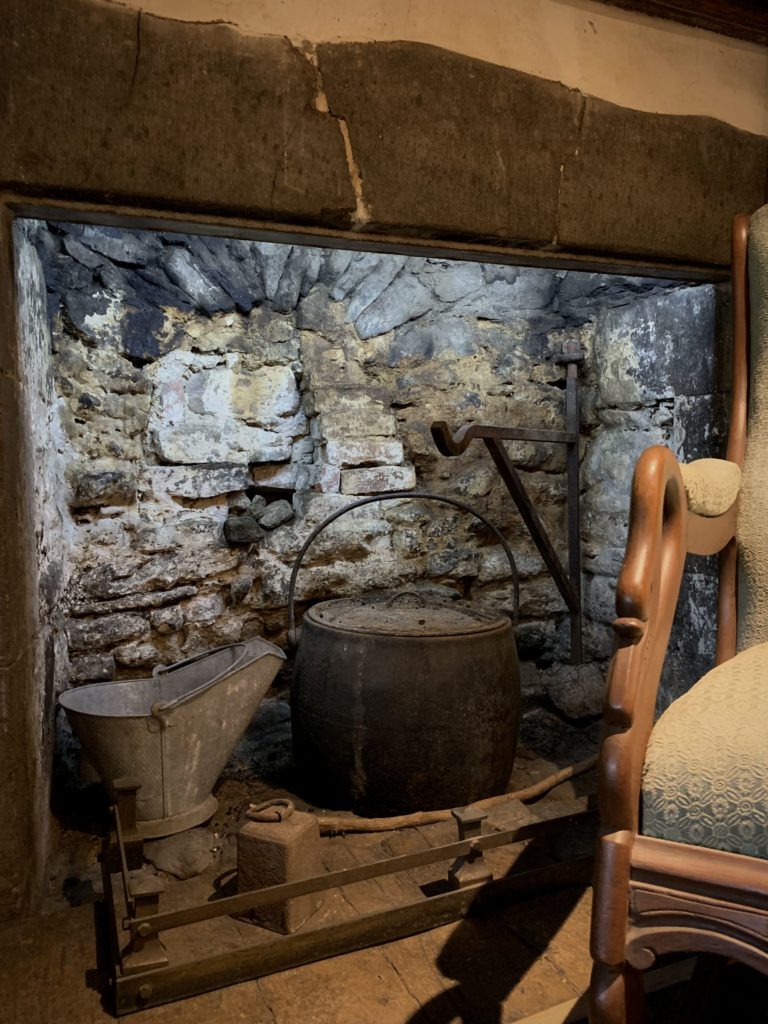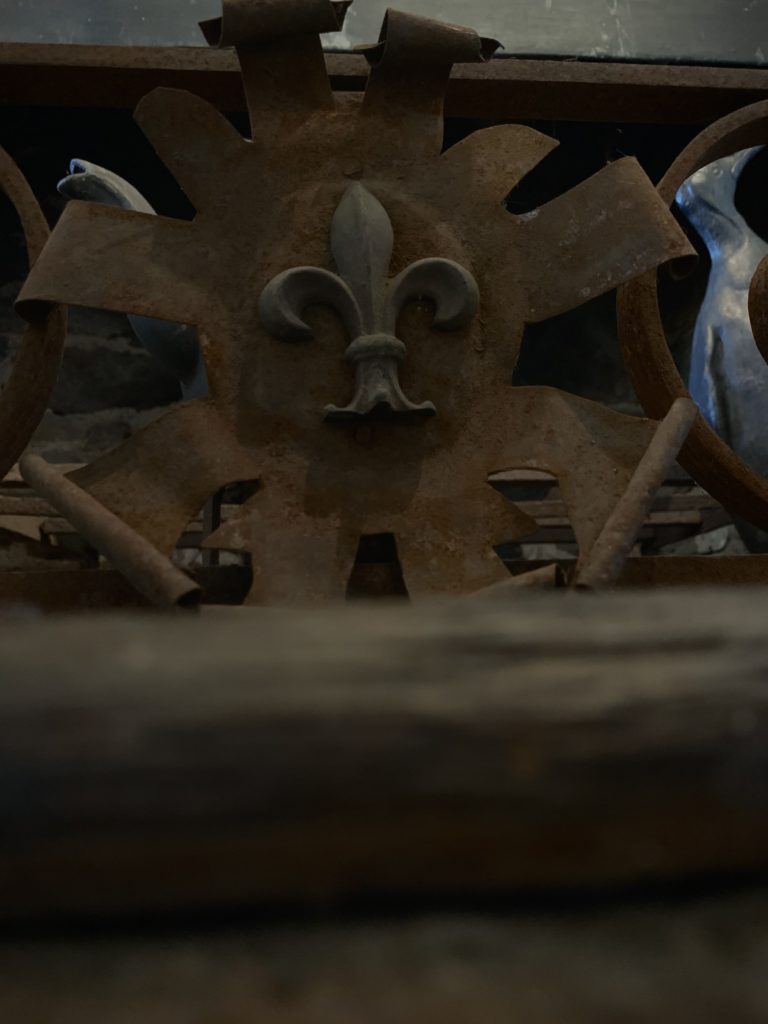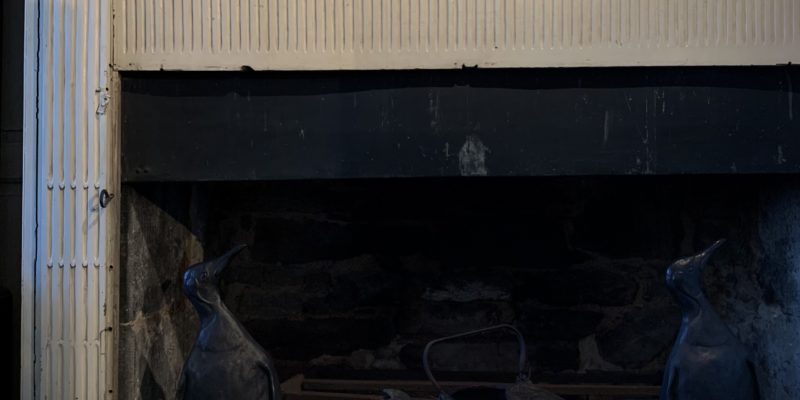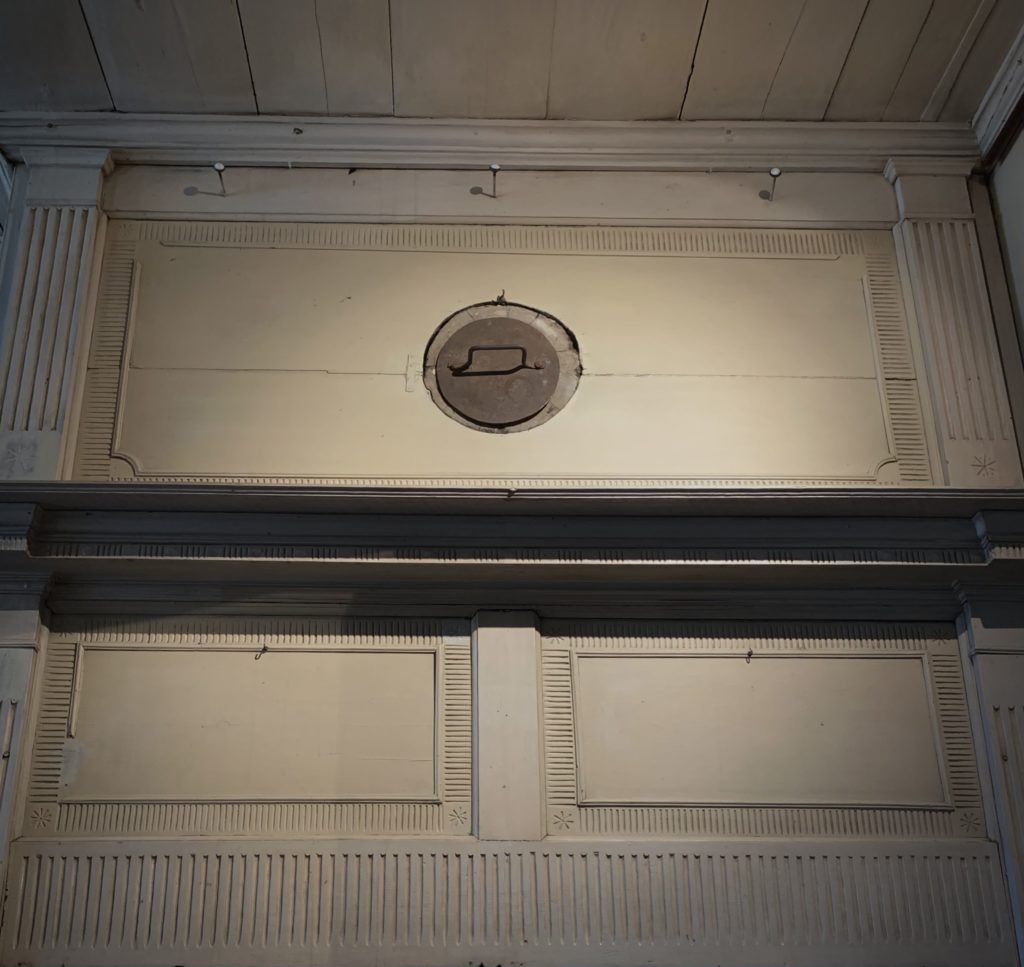Written by Delia Oltean –
Doors must be closed, shutters and curtains too; there is a cold wind blowing outside which is trying very hard to infiltrate in the house. Family members gather in the same room in front of a huge masonry construction, the fireplace. The flickering of the orange flames brings a light in everyone’s eyes.
Winter has always been a challenge for Montrealers and the Hurtubise family had to face this reality too. The story behind the soothing warmth coming from the Hurtubise’s fireplaces likely brings a glimmer of light in their eyes, that of curiosity.
The Hurtubise House has two fireplaces which are located respectively to the west, in the living room, and to the east, in the kitchen, which is used for both heating and cooking purposes. When the Hurtubise family decided to extend the original version of the house and add an annex at the end of the XIXth century, the discovery of stones in the form of an arch revealed the presence of vestiges of what had originally been a bread oven in the kitchen’s fireplace (Stewart et Robichaud, 2001, page 45).

From this last fireplace used for cooking, it is possible to see stones coming out from the bottom which is a direct testimonial of the past. It appears that fireplaces as well as bread oven form part of the original masonry contract which dates back to 1739 (Stewart et Robichaud, 2001 pg. 45).
There have been other discoveries and in 2011 an archeological excavation was done at the Hurtubise House to look further into the researches carried out, this time, on the fireplace on the west side. It appeared that, due to a water leak, the hearth (stones located on the floor in front of the fireplace) got detached over time, resulting in an accumulation of ashes inside. Archeologists have proceeded to the sifting of the ashes and have made crucial discoveries revealing material objects in direct correlation with the people living in the Hurtubise House since 1739. Tangible fragments such as a red brown flintlock rifle which dates back to the XVIIIth century or more inexplicably a golden ceramic rosary form part of these findings (Archéotec, 2012, pg. 81-82).
When referring to the fireplace on the west side, it must be specified that a metal trap used for controlling the draught is located in the chimney. With the help of a handle on the side, it is possible to open or close the trap in order to control the fire intensity and the heat in the room. There is also a sliding metal partition in front of the hearth which can be moved from top to bottom and held in place with metal pins. This partition also helps to reduce draught and to improve the home heating. When the fireplace is not used, a wooden trap covers the hearth opening. However, the mantel made of wood appliqués which dates back to the 18th century, stays permanently on the fireplace.

The fireplaces are not the only items of interest in the house as the Hurtubise House’s collection also comprises a wood box which was perhaps used to store firewood. Made of a smaller dimension, this box is also called a kindling box or hod box and is made of wood covered with decorated brass. Depending on the type of kindling box, the brass cover shows different artwork.
It is around fireplaces, very useful elements at that time but more discreet nowadays because they are not used, that a rich history has evolved and gives us a glimpse one layer at a time of the elements buried by time and ashes.
Sources:
- Stewart, A. et Robichaud, L. (2001). Étude patrimoniale de la maison des Hurtubise. Rapport présenté au Ministère de la Culture et des Communications et à l’Institut d’histoire de l’Amérique française.
- Archéotec. (2012). Maison Hurtubise. Rapport d’inventaire et supervision archéologiques.
- This Old Thing: Decorative ‘hod boxes’ often held coal. (2012). The Record. https://www.therecord.com/life/2012/08/18/this-old-thing-decorative-hod-boxes-often-held-coal.html

